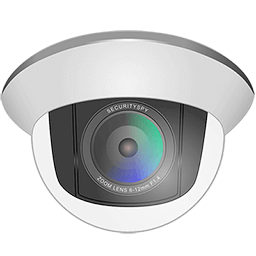
However, the parentheses shown in Handler Syntax (Positional Parameters) are part of the syntax. Italic text indicates a placeholder that you replace with an appropriate value.īrackets indicate that the enclosed language element or elements are optional. If there are special symbols (for example, + or &), you also type them exactly as shown. Plain computer font indicates an element that you type exactly as shown. Glossary terms are shown in boldface where they are defined. Unsupported Terms lists terms that are no longer supported in AppleScript.
Securityspy applescript how to#
Libraries using Load Script describes how to save libraries of handlers and access them from other scripts. Working with Errors provides detailed examples of handling errors with try Statements and error Statements.ĭouble Angle Brackets describes when you are likely to see double angle brackets (or chevrons- «») in scripts and how you can work with them. The following appendixes provide additional information about the AppleScript language and how to work with errors in scripts:ĪppleScript Keywords lists the keywords of the AppleScript language, provides a brief description for each, and points to related information.Įrror Numbers and Error Messages describes error numbers and error messages you may see in working with AppleScript scripts. The following chapter describes an AppleScript-related feature of macOS:įolder Actions Reference describes how you can write and attach script handlers to specific folders, such that the handlers are invoked when the folders are modified. Handler Reference shows the syntax for defining and calling handlers and describes other statements you use with handlers.

It covers standard conditional statements, as well as statements used in error handling and other operations. Operators Reference provides a list of the operators AppleScript supports and the rules for using them, along with sections that provide additional detail for commonly used operators.Ĭontrol Statements Reference describes statements that control when and how other statements are executed. Reference Forms describes the syntax for specifying an object or group of objects in an application or other container. The following chapters provide reference for the AppleScript Language:Ĭlass Reference describes the classes AppleScript defines for common objects used in scripts.Ĭommands Reference describes the commands that are available to any script.

Script Objects describes how to define, initialize, send commands to, and use inheritance with script objects.Ībout Handlers provides information on using handlers (a type of function available in AppleScript) to factor and reuse code. Variables and Properties describes common issues in working with variables and properties, including how to declare them and how AppleScript interprets their scope. The first five chapters introduce components of the language and basic concepts for using it, then provide additional overview on working with script objects and handler routines:ĪppleScript Lexical Conventions describes the characters, symbols, keywords, and other language elements that make up statements in an AppleScript script.ĪppleScript Fundamentals describes basic concepts that underly the terminology and rules covered in the rest of this guide.
Securityspy applescript series#
This guide describes the AppleScript language in a series of chapters and appendixes. You should use this document if you write or modify AppleScript scripts, or if you create scriptable applications and need to know how scripts should work.ĪppleScript Language Guide assumes you are familiar with the high-level information about AppleScript found in AppleScript Overview. Most script samples and script fragments in this guide use scriptable features of the Finder application, scriptable parts of macOS, or scriptable applications distributed with macOS, such as TextEdit (located in /Applications). (Apple events can also be sent directly from other applications and macOS.)ĪppleScript itself provides a very small number of commands, but it provides a framework into which you can plug many task-specific commands-those provided by scriptable applications and scriptable parts of macOS. For AppleScript, that means being responsive to interapplication messages, called Apple events, sent when a script command targets the application. For more information, see Automator Documentation.Ī scriptable application is one that can be controlled by a script. Note: Apple also provides the Automator application, which allows users to automate common tasks by hooking together ready-made actions in a graphical environment.


 0 kommentar(er)
0 kommentar(er)
